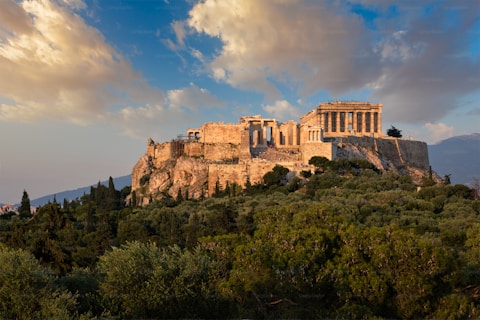Hiking Vikos Gorge
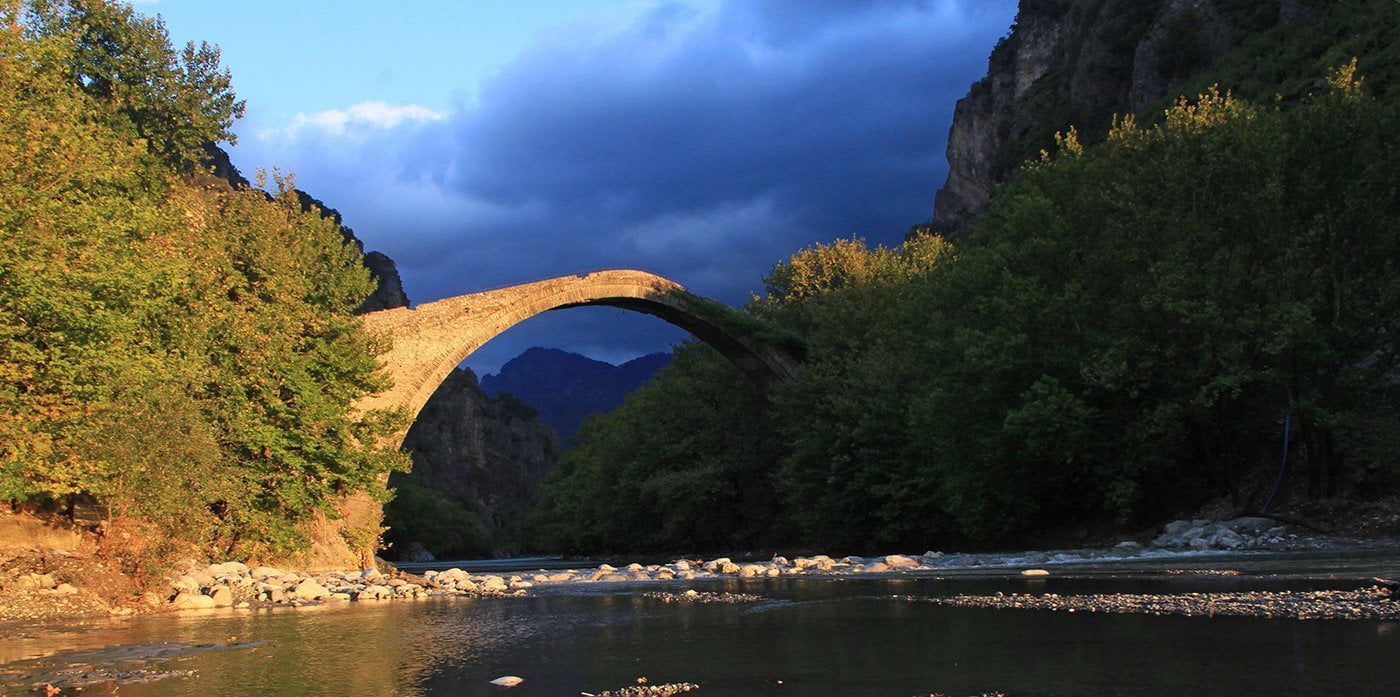
The fact that it is listed in the Guinness Book of Records as the deepest canyon in the world – in proportion to its width – has nothing to do with the way the eye meets the impressive, castle-like rock formations all around you or the mesmerizing river Voidomatis at its bottom.
Vikos gorge in numbers
For those who love numbers, though, this rare geological miracle has a length of 20 kilometers, cliffs that range from 450m to 1,600m deep and a width from 400m to a mere few, at its narrowest part. Of its total length, more than half lies within the Vikos-Aoos National Park zone and is characterized by abrupt altitudinal changes. The steep slopes and precipitous, rocky cliffs that dominate its middle and higher zones are all the result of the erosion by river Voidomatis that has been carving the rock for millions of years.
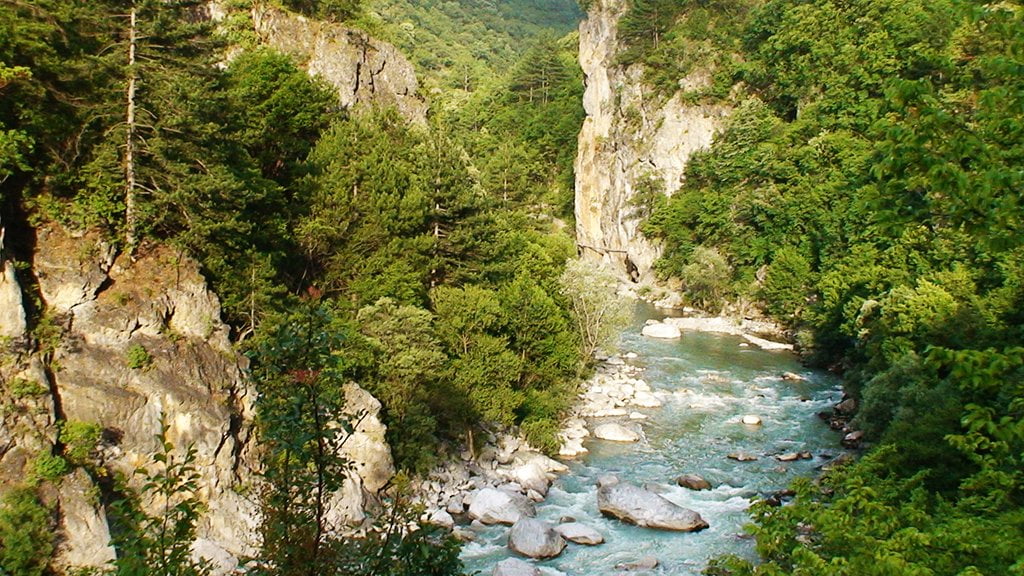
Aoos River Photo Credit: Αλέξανδρος
Treking Vikos gorge
A typical trek at Vikos starts at the picturesque stone-built village of Monodendri and, although it is a rewarding experience, it is not for everybody. An experienced trekking team would take a good 5-hour-long trek to cover the 13 kilometers through the gorge, from Monodendri to Mikro- or Megalo-Papigo villages; someone with an average physical condition should calculate between 7 and 9 hours, to be on the safe side. The trail is marked but as you get lower, from Monodendri to the riverbed, some markings may be missing. You can easily find your way through, especially in the summer months when the trail is traveled by many other hikers, but an easier approach – and one that will leave you with more time to marvel around you – is to hire a guide. You would not only save time and effort but will also learn about the gorge’s history, geology, botanical diversity, and ecosystem. After all, if it is going to take you a full 8 or 9 hours, you beter spend the daylight and your stamina enjoying the trail rather than roaming around in circles trying to find your way.

Beyond the Agia Paraskeyi monastery near Monodendri Photo Credit: Costas Tavernarakis
The first part of the trail is offering magnificent views of the gorge, although you find yourself going down a very steep path, through thick vegetation. The panoramic views from Beloi and Oxia spots are breathtaking. As you descent into the gorge the views give their place to an extremely pure and untouched ecosystem with more than 1700 plants, some of them impressively rare.
Herbs of Vikos and the “Vikogiatroi”
In the old days, the medicine-men of Vikos called “Vikogiatroi” (meaning “Viko’s doctors”) were famous for their knowledge on these plants and herbs. They visited the gorge to collect herbs, and then travelled around the Zagoria villages, offering the cures they made from them. But their healing secrets were kept tightly and were passed down from father to son – in a guild-like manner – so, over the years, most have been lost.
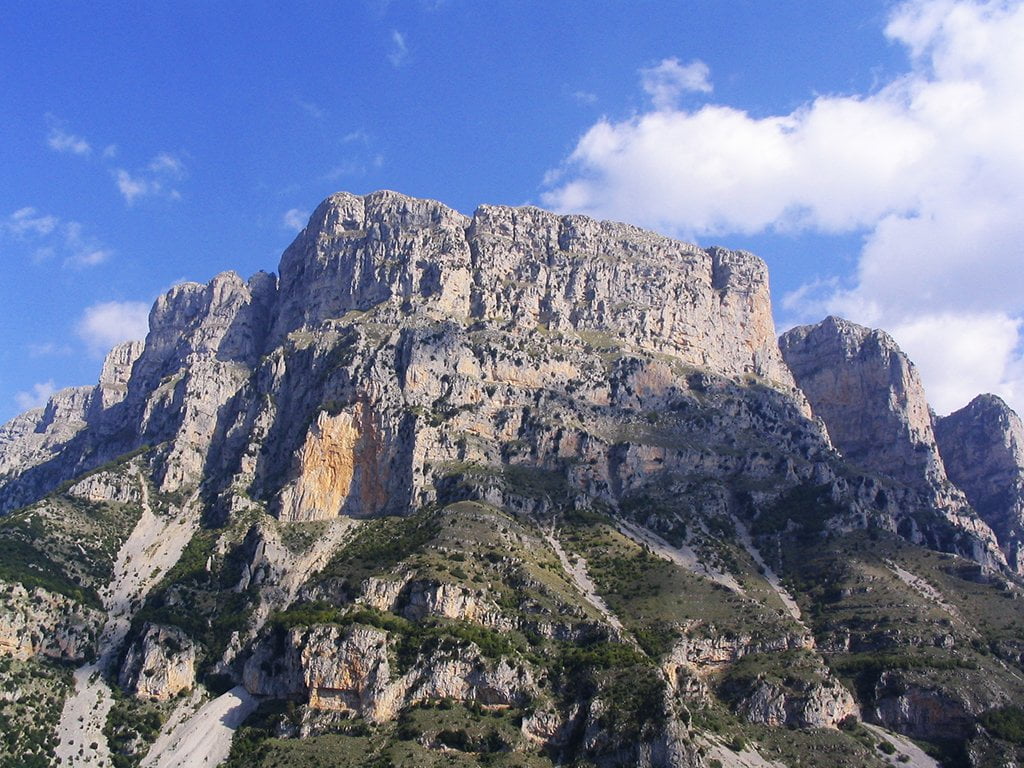
View of the towers of Astraka ridge Photo Credit: Costas Tavernarakis
Fauna of Vikos Gorge
Birds of prey and wild animals live in this sanctuary, with wild boars and even brown bears among them. But you need not worry – beasts and people have managed to get along fine, with no reported incidents of injuries or dangerous encounters.
Lower down the gorge the river dominates the space and all you have to do is follow the charming footpath next to the bank. Its unbelievably crystal-clear, turquoise waters flow all year long and a quick dip into any of the little ponds they form is the perfect cure for sore feet. Some people even swim in the river, just under the Papigo village by the monastery, and before climbing up to it, where the hike usually ends; but be prepared: we are talking about ice-cold water, around 9 degrees Celsius!

Aoos River Photo Credit: Αλέξανδρος
The way to a hiker’s heart is through his stomach
Finally, do not forget that the local cuisine and the tsipouro (grape-distilled spirit) in the Papigo villages is the best way to celebrate and reward yourselves after the hike. Just make sure to have your transportation from there back to your accommodation arranged, as public transportation services in the region vary from zero to sporadic, at best. If you have neglected it, then local taxis – although a bit pricey – are a reliable last-moment solution.
Cover Photo Credit: Miltos Gikas
Feeling Ready?
From our blog
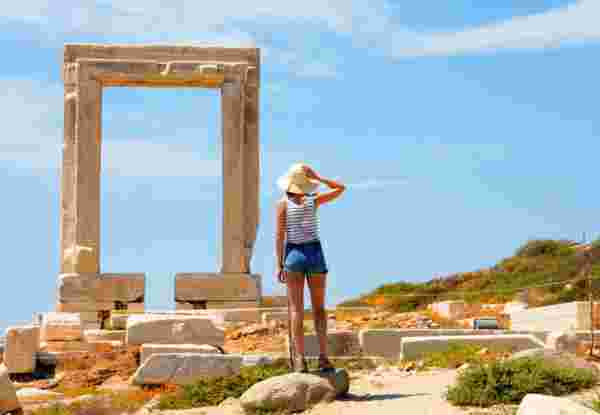
Honeymoon in Naxos: A Complete Guide
READ MORE
Visiting Athens with Kids: A helpful Guide
READ MORE
Paros for Seniors: Tips and Itinerary
READ MORE
Best Resorts in Greece for Families: Your Ultimate 2025 Guide
READ MORE
How to Enjoy Santorini for Seniors
READ MORE
Honeymoon in Paros Island
READ MORE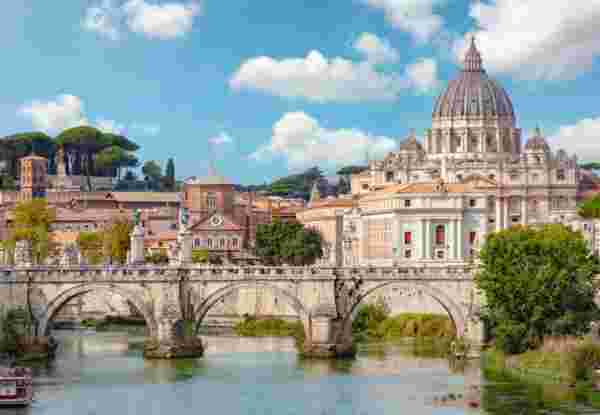
Rome Travel Guide: What to Do, When to go and Where to Go
READ MORE
The Best Greek Islands for Couples, According to a Luxury DMC
READ MORE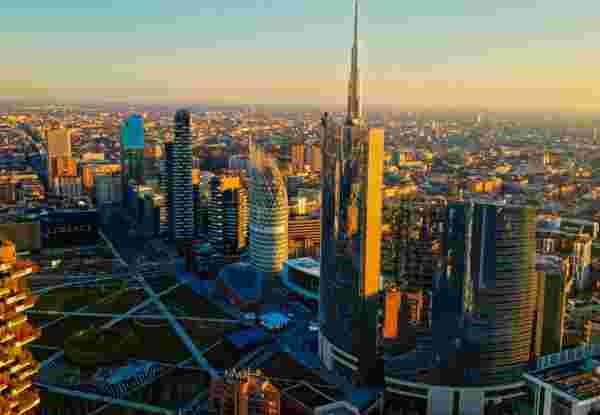
Discover Milan: Top Attractions
READ MORE
